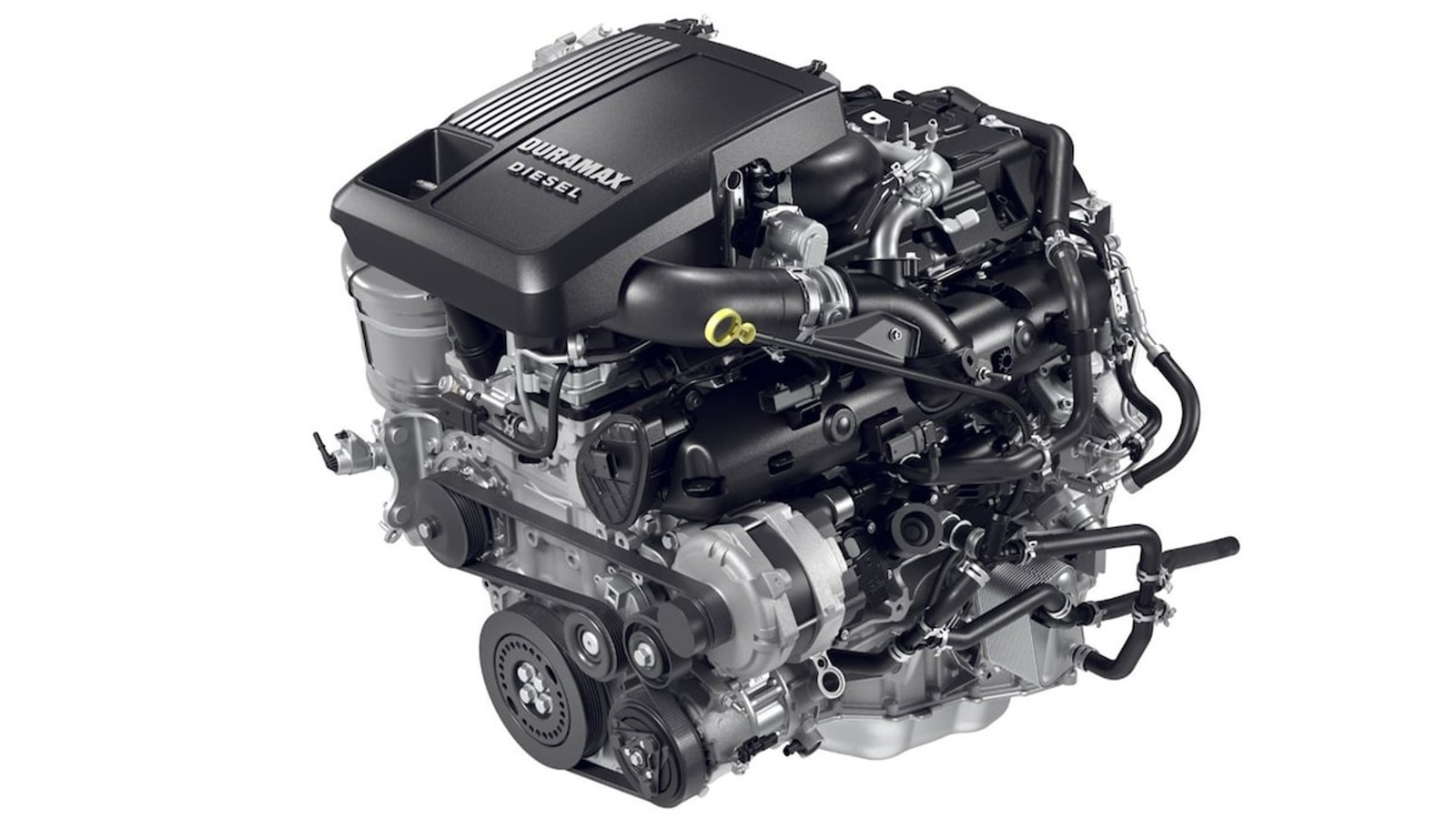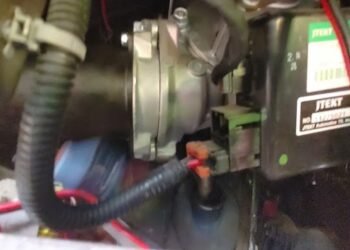Are you considering a 3.0 Duramax engine or already own one? If so, you’ve likely heard whispers about its performance and reliability.
The truth is, no engine is perfect, and the 3. 0 Duramax is no exception. But what are the real issues, and how might they affect you? In this post, we’ll dive into the most common problems owners face, helping you separate fact from fiction.
Stick around—you’ll not only uncover potential pitfalls but also learn how to tackle them effectively, saving yourself time, money, and stress.
Common Engine Issues
The 3.0 Duramax diesel engine is known for its impressive efficiency and performance. But like any engine, it isn’t without its quirks. If you own or are considering a vehicle with this engine, knowing the common issues can save you time, money, and frustration. Let’s break down the key problems you might encounter and how they could affect your experience.
Oil Leaks And Seals
Oil leaks are a common gripe with the 3.0 Duramax, especially around seals and gaskets. Over time, these components can wear out, leading to visible oil spots under your vehicle. Ignoring this could result in low oil levels and even long-term engine damage.
Pay special attention to the rear main seal and oil pan gasket, as these are frequent troublemakers. Regularly check your driveway or garage floor for leaks. If you spot any, addressing the issue early can prevent costly repairs later.
Turbocharger Failures
The turbocharger plays a big role in delivering the power and efficiency you love about the 3.0 Duramax. But when it fails, you’ll notice a drop in performance, increased exhaust smoke, or even odd whining noises. Turbo issues often stem from oil contamination or insufficient lubrication.
To keep your turbo in good shape, stick to scheduled oil changes and use high-quality oil. If you’re noticing lagging acceleration or reduced fuel efficiency, it might be time to inspect your turbo. Early intervention can keep you from facing major headaches.
Excessive Oil Consumption
Some owners report the 3.0 Duramax guzzling more oil than expected. This can catch you off guard, especially if you’re not in the habit of checking oil levels regularly. Excessive oil consumption often points to issues with piston rings or valve seals.
Track your oil levels between changes to spot any unusual patterns. If you’re adding oil more frequently than usual, consult a trusted mechanic. Proactively addressing this can keep your engine running smoothly and prevent further wear.
Have you noticed any of these issues with your 3.0 Duramax? Being proactive and staying informed about potential problems can help you avoid costly repairs and keep your vehicle performing at its best. What steps are you taking to maintain your engine’s health?

Credit: www.youtube.com
Fuel System Challenges
The 3.0 Duramax engine offers solid performance, but its fuel system can face issues. These problems often impact efficiency and reliability, leading to costly repairs. Understanding the most common challenges can help owners address them early.
Below, we’ll discuss key fuel system problems, including injector malfunctions, fuel pump failures, and contaminated diesel concerns.
Injector Malfunctions
Injectors are critical for delivering fuel to the engine. Malfunctions can cause uneven fuel distribution, reducing power and efficiency. Symptoms often include rough idling, poor acceleration, or excessive engine noise. Dirt buildup and wear can be major causes of injector failure.
Regular maintenance and using high-quality diesel can reduce injector issues. If injectors fail, they may need replacement, which can be expensive.
Fuel Pump Failures
The fuel pump ensures the engine receives a steady fuel supply. A failing pump can lead to stalling, poor engine performance, or difficulty starting. Over time, wear, overheating, or contaminated fuel can damage the pump.
Signs of failure include whining noises from the tank or reduced fuel pressure. Addressing these early can prevent larger engine problems.
Contaminated Diesel Problems
Dirty or contaminated diesel can harm the fuel system. Water, debris, or poor-quality fuel can clog injectors and filters, causing reduced performance. Contaminants may also damage the fuel pump and other components.
Using clean, certified diesel and changing filters regularly can minimize risks. Fuel additives can help improve diesel quality and protect the system.
Exhaust System Concerns
The 3.0 Duramax engine is known for efficiency and performance. Yet, its exhaust system can face specific challenges over time. These issues may impact engine efficiency and emissions compliance. Understanding these problems can help you identify and address them early. Below, we explore common exhaust system concerns in detail.
Diesel Particulate Filter Clogging
The Diesel Particulate Filter (DPF) removes soot from exhaust gases. Over time, soot buildup can clog the filter. Short-distance driving makes it harder for the engine to clean the filter. A clogged DPF can reduce engine power and fuel efficiency. Regular regeneration cycles are necessary to keep the filter functional.
Exhaust Gas Recirculation Valve Issues
The Exhaust Gas Recirculation (EGR) valve recirculates exhaust gases into the engine. This process reduces harmful emissions. Over time, carbon deposits may block the valve. A blocked EGR valve can cause rough idling, reduced performance, and increased emissions. Cleaning or replacing the valve can resolve these issues.
Emission System Fault Codes
The 3.0 Duramax may trigger emission-related fault codes. These codes often indicate problems with sensors or exhaust components. Fault codes can result from a faulty DPF, EGR valve, or oxygen sensor. Using an OBD-II scanner can help identify the exact issue. Addressing these codes promptly prevents further damage.

Credit: pickuptrucktalk.com
Cooling System Problems
The 3.0 Duramax engine has earned praise for its fuel efficiency and performance, but like any engine, it’s not without its quirks. One area where owners frequently report issues is the cooling system. Let’s dive into the common problems, why they happen, and what you can do about them.
Radiator Leaks
Radiator leaks are one of the most reported cooling system issues with the 3.0 Duramax. Over time, the radiator’s materials can weaken, leading to small cracks or pinhole leaks. These leaks might not seem like a big deal at first, but they can cause your coolant level to drop fast.
Keep an eye on your driveway for puddles of coolant or a sweet smell under the hood. Addressing a leak early can save you from more costly repairs down the road. If you’re handy, replacing a damaged radiator isn’t overly complicated, but it’s better to let a professional handle it if you’re unsure.
Thermostat Failures
A faulty thermostat can wreak havoc on the 3.0 Duramax’s cooling system. When the thermostat sticks closed, it prevents coolant from circulating, causing the engine to overheat. On the flip side, if it’s stuck open, the engine might run too cool, impacting fuel efficiency and performance.
Have you ever noticed your temperature gauge behaving erratically? That’s often the first sign of a thermostat issue. Replacing the thermostat is a relatively inexpensive fix but ignoring the problem can lead to severe engine damage.
Overheating During Heavy Loads
Overheating is a common complaint when towing or driving uphill with the 3.0 Duramax. The cooling system can struggle to keep up during high-demand situations, especially if it’s already compromised by other issues like a weak radiator or failing thermostat. Even a partially clogged coolant line can tip the balance.
To reduce the risk of overheating, always check your coolant levels before towing or hauling heavy loads. Consider installing an aftermarket auxiliary cooling system if you frequently push your truck to its limits. This small investment can make a big difference in keeping your engine running smoothly.
Are you dealing with any of these cooling system problems? Tackling them early can save you time, money, and the headache of unexpected breakdowns. Don’t ignore the warning signs—your 3.0 Duramax deserves better.
Electrical System Glitches
The 3.0 Duramax engine is known for its efficiency and performance. Yet, electrical system glitches have raised concerns among owners. These issues can lead to reduced reliability and unexpected expenses. Understanding the common electrical problems helps ensure smooth operation and minimizes downtime.
Sensor Failures
Sensors play a key role in monitoring engine performance. Faulty sensors can cause inaccurate readings and disrupt engine operation. Common failures include the mass airflow sensor and crankshaft position sensor. These failures may trigger warning lights or affect fuel efficiency. Regular diagnostics help identify faulty sensors early and prevent further damage.
Battery Drain Issues
Unexplained battery drain is a frequent complaint with the 3.0 Duramax. Electrical components sometimes draw power even when the vehicle is off. Over time, this can drain the battery completely. Owners often report frequent jump-starts or battery replacements. Addressing the root cause, such as a malfunctioning module, can resolve this issue.
Wiring Harness Damage
Damaged wiring harnesses are another common electrical problem. Frayed or broken wires can disrupt the flow of electricity. This may lead to erratic behavior of lights, sensors, or other components. Exposure to heat or wear and tear often causes this damage. Periodic inspection of the wiring harness can prevent unexpected failures.

Credit: www.slashgear.com
Transmission-related Issues
The 3.0 Duramax engine has gained popularity for its impressive power and fuel efficiency, but like any machine, it’s not without its flaws. One area that some owners have flagged is transmission performance. Let’s dive into the most common transmission-related issues and what they mean for you.
Shifting Delays
Have you ever felt a noticeable lag when your truck shifts gears? You’re not alone. Many 3.0 Duramax owners report shifting delays, especially during cold starts or when accelerating uphill. This can be frustrating, especially if you rely on quick gear changes for towing or hauling.
The problem often stems from outdated transmission software or worn-out components. A quick visit to your dealership for a software update might solve the issue. If not, it might be time to inspect the transmission fluid or clutch plates. Are you noticing unusual sounds during shifts? That’s another sign it’s worth investigating further.
Torque Converter Problems
The torque converter plays a crucial role in transferring power from the engine to the transmission. However, some 3.0 Duramax owners complain about shuddering or slipping during acceleration. This can feel like your truck is struggling to find its footing on the road.
These symptoms could point to a faulty torque converter or contaminated transmission fluid. Regular fluid checks can help you stay ahead of this problem. If the issue persists, replacing the torque converter might be necessary. While it’s an investment, it’s better than risking long-term damage to your transmission.
Transmission Overheating
Overheating is another issue you might encounter, especially if you push your truck hard with heavy towing or long drives in hot weather. High transmission temperatures can lead to fluid degradation, reducing its ability to lubricate and cool the system.
To prevent overheating, ensure your transmission cooler is functioning properly. Consider upgrading to a more robust cooling system if you frequently tow heavy loads. Keeping an eye on your temperature gauge can help you catch rising heat before it leads to serious damage.
So, what steps will you take to keep your 3.0 Duramax transmission in top shape? Regular maintenance and early detection of issues can save you from costly repairs down the road. Don’t wait for small problems to escalate—address them before they become a major headache.
Preventative Maintenance Tips
The 3.0 Duramax engine offers impressive performance and efficiency. To keep it running smoothly, regular maintenance is essential. Preventative care helps avoid costly repairs and extends the engine’s lifespan. Following simple routines can prevent common issues.
Let’s explore key tips for maintaining your 3.0 Duramax engine.
Regular Oil Changes
Oil is the lifeblood of your engine. It lubricates moving parts and reduces wear. Skipping oil changes can lead to sludge buildup and poor performance. Change the oil as recommended by the manufacturer. Use high-quality oil that meets engine specifications.
Check the oil levels frequently. Refill if necessary to avoid low oil pressure. Regular oil changes help the engine run smoothly and efficiently.
Proper Fuel Quality Usage
Fuel quality impacts engine health. Low-grade or contaminated diesel can clog fuel injectors. It may also harm sensitive engine components. Always use clean, high-quality diesel fuel for your 3.0 Duramax.
Avoid storing diesel for long periods. Old fuel may degrade and cause issues. Consider using fuel additives to improve combustion and protect fuel systems.
Timely Software Updates
Modern engines rely on software for optimal performance. Outdated software may cause inefficiencies or error codes. Check for software updates regularly through authorized service centers.
Updating the software ensures the engine operates at peak efficiency. It also helps resolve known issues and improves fuel economy.
Frequently Asked Questions
What Are Common Issues With The 3.0 Duramax Engine?
The 3. 0 Duramax may face oil leaks, turbocharger issues, and emission system malfunctions. Regular maintenance helps minimize problems.
Does The 3.0 Duramax Have Fuel Efficiency Problems?
Generally, the 3. 0 Duramax is fuel-efficient. However, clogged fuel filters or injector issues can lower its performance.
Are 3.0 Duramax Engines Prone To Overheating?
Overheating can occur due to coolant leaks or a faulty thermostat. Regular cooling system checks prevent this issue.
How Reliable Is The 3.0 Duramax Engine?
The 3. 0 Duramax is reliable for most users. Routine care and timely repairs ensure consistent performance.
What Causes Turbo Issues In 3.0 Duramax Engines?
Turbo problems often arise from carbon buildup or insufficient lubrication. Using quality oil helps prevent turbo damage.
Conclusion
Addressing 3. 0 Duramax problems can save time, money, and frustration. Regular maintenance helps prevent common issues and extends engine life. Pay attention to warning signs like power loss or unusual noises. Early repairs can avoid bigger, costly damages later.
Stay informed about known problems to better care for your vehicle. Always consult a trusted mechanic for professional advice and solutions. A well-maintained 3. 0 Duramax ensures better performance and reliability on the road. Take small steps today to keep your engine running smoothly for years to come.
















